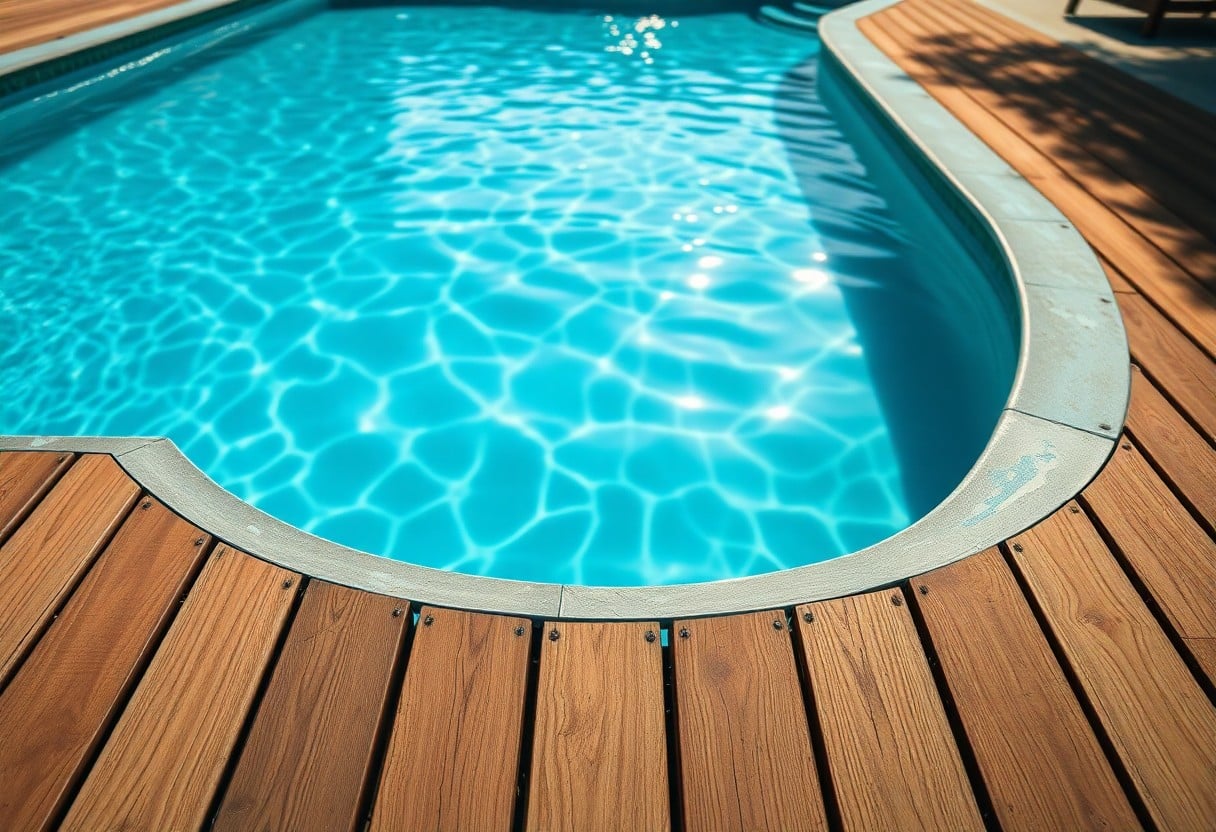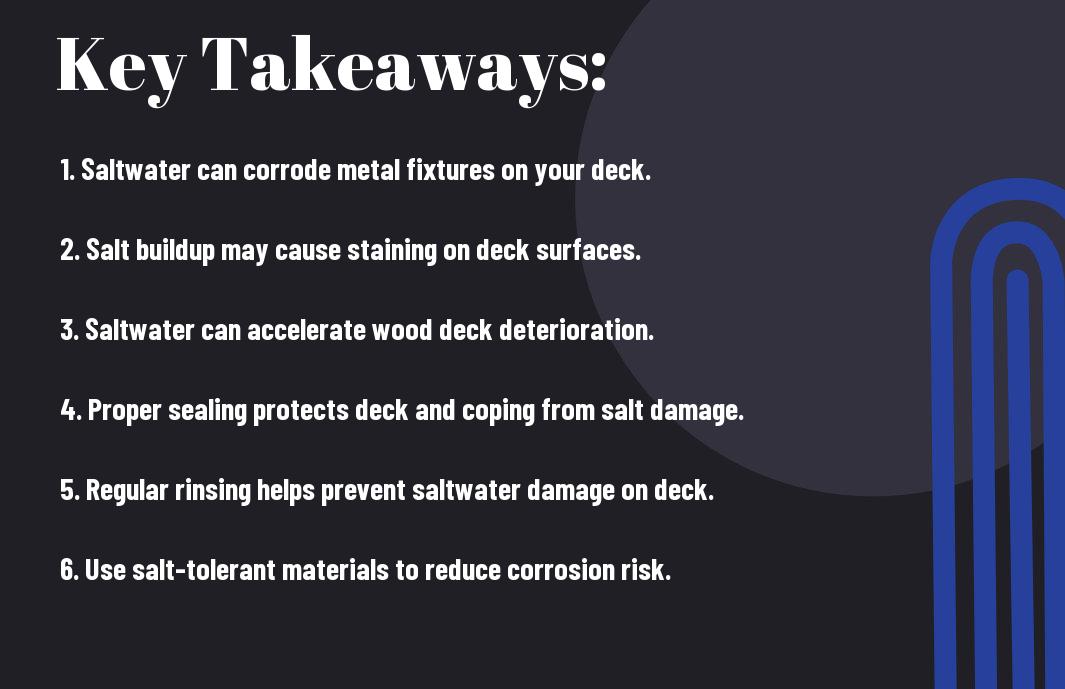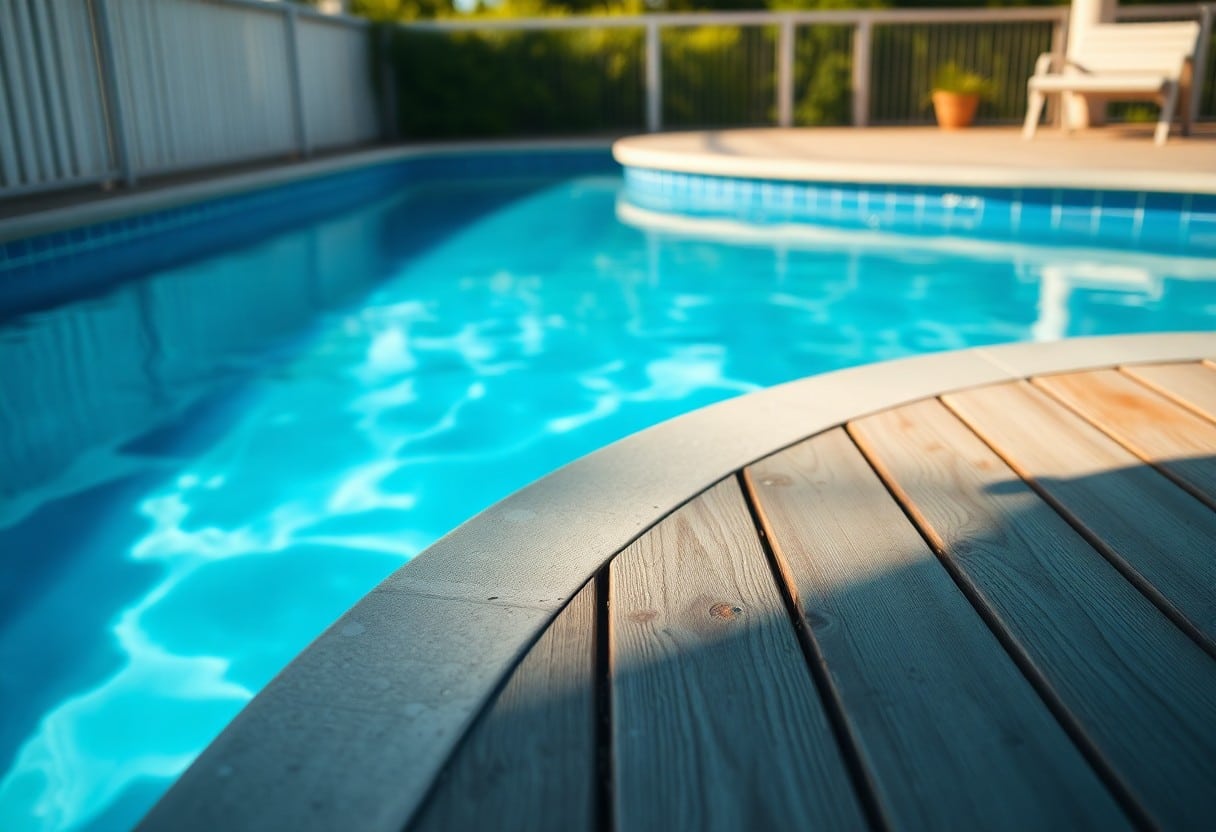With the increasing popularity of saltwater pools, you may be wondering whether the saltwater could be harming your deck and coping. Saltwater systems offer a more natural swimming experience, but they can also cause degradation if not properly managed. In this post, we will explore how saltwater can affect different decking materials and coping stones, helping you to make informed decisions about the maintenance and longevity of your outdoor space.

The Chemistry of Saltwater and Its Impact
Understanding the chemistry of saltwater is vital for assessing its potential effects on your deck and pool coping. Saltwater pools utilize sodium chloride, or common salt, which is converted into chlorine through electrolysis. This process helps sanitize the water but introduces other chemical components that can contribute to the degradation of materials surrounding your pool environment. The interactions between salt and various building materials play a significant role in how your deck and coping endure over time.
Salt Composition and Concentration
The concentration of salt in a typical saltwater pool is around 2,500 to 3,500 parts per million (ppm), which is slightly less than natural seawater. While this level may appear minimal, it can still be significant enough to affect the various materials used in your deck and coping. Different compositions respond variably to salt exposure, as some materials are more resilient than others.
Effects on Deck Materials
Deck materials such as wood, composite, stone, and concrete each react differently to saltwater exposure. Concrete can degrade over time due to the corrosive effects of salt, leading to cracks and surface abnormalities. Wooden decks may suffer from rot and decay, while composite materials can face surface deterioration. These variations highlight the importance of choosing the appropriate materials for your poolside area to minimize salt-related damage.
The effects on your deck materials can be particularly pronounced depending on the climate and maintenance practices. For instance, wooden decks that are not properly treated can absorb salt, leading to swelling and splitting. Concrete can show signs of spalling as excess moisture, combined with salt, contributes to freeze-thaw cycles that weaken the structure. Meanwhile, composite materials may suffer from color fading and a decline in aesthetic appeal due to prolonged exposure. Regular cleaning and maintenance can help mitigate some of these issues, but understanding the inherent weaknesses of your chosen materials lets you make informed decisions regarding their longevity in a saltwater environment.


Common Decking and Coping Materials: Vulnerability Assessment
Understanding how different materials respond to saltwater exposure can help you make informed decisions about your deck and coping options. Each material possesses its own set of vulnerabilities and resilience levels concerning corrosion and degradation from saltwater. By knowing the strengths and weaknesses of the materials used in your outdoor spaces, you can proactively protect your investments and prolong their lifespan.
Wood vs. Composite: A Material Showdown
Wood and composite decking both offer unique benefits, but their reactions to saltwater differ significantly. Natural wood, while aesthetically pleasing and structurally strong, is susceptible to salt-induced rot and warping if not properly sealed. Composite materials, on the other hand, are generally more resilient against saltwater exposure due to their synthetic composition, which resists moisture and won’t splinter or decay easily.
Stone and Concrete Survivability
Stone and concrete decking are often considered the robust options, but they are not completely immune to saltwater damage. While stone typically withstands saltwater without cracking or chipping, prolonged exposure can erode stone surfaces and affect the integrity of the grout used in pavers. Concrete also faces similar challenges; the salt can weaken the concrete over time and promote spalling, especially if water seeps into its porous structure. Regular maintenance and sealing can help mitigate these risks and maintain the durability of your stone and concrete surfaces.
Indications of Damage from Saltwater Exposure
Recognizing signs of damage due to saltwater exposure is crucial for maintaining your deck and coping. If you notice whitening or discoloration of your materials, it often indicates that salt deposits are accumulating. Additionally, cracks or pitting may begin to appear, especially in concrete or stone surfaces, which can compromise the structural integrity of these materials. You may also see an increase in slippery surfaces due to algae growth, catalyzed by the saltwater environment. Early identification of these issues is key to preventing further damage.
Signs of Erosion and Degradation
Erosion and degradation are often heralded by visible wear and tear on your surfaces. You might observe a rougher texture or flaking on wooden decks, while concrete may show signs of spalling—where the surface peels away. These changes often stem from the repeated exposure to saltwater, which accelerates deterioration more than fresh water would under similar conditions. Keeping an eye on these signs can help you address issues before they escalate into costly repairs.
Long-term Effects on Aesthetics and Structural Integrity
The long-term consequences of saltwater exposure extend beyond surface appearance; they jeopardize the overall structural integrity of your deck and coping materials. Salt can facilitate the breakdown of wood fibers, leading to structural weakness, while concrete or stone surfaces may become increasingly porous, making them susceptible to further damage. Over time, this degradation can result in costly repairs or even the need for complete replacement, underscoring the importance of early intervention and maintenance.
As the materials continue to degrade, the unsightly appearance of your deck and coping can diminish the charm of your outdoor space. Cracking and erosion may lead to water pooling, increasing the risk of slips and falls. Moreover, a weakened structure can compromise safety, making it crucial to monitor the condition of your materials closely. Proper treatment and maintenance can stave off these long-term repercussions, ensuring that your deck remains both beautiful and useful for years to come.
Preventative Measures to Protect Your Investment
Taking proactive steps to safeguard your deck and coping from saltwater damage can preserve their longevity and aesthetic appeal. Simple yet effective measures like applying protective coatings, establishing a routine maintenance schedule, and choosing the right materials can make all the difference. Incorporating these strategies ensures your outdoor investment remains in top condition, ultimately saving you from costly repairs or replacements.
Protective Coatings and Sealants
Applying high-quality protective coatings and sealants is an effective way to create a barrier against saltwater corrosion. Look for products specifically designed for exterior use and compatible with the materials of your deck and coping. A good sealant helps repel moisture, preventing the salts from penetrating surfaces and reduces the risk of deterioration.
Routine Maintenance Practices
Establishing regular maintenance practices helps keep salt and minerals at bay. This includes rinsing off your deck and coping with fresh water after heavy pool use, removing debris, and inspecting for cracks or damage. Catching signs of wear early allows you to address them before they worsen, prolonging the life of your outdoor areas.
Routine maintenance also involves periodic cleaning and resealing of surfaces. For instance, a thorough wash with a mild cleaner can remove salt buildup that may lead to staining or corrosion. Depending on your climate, consider resealing your surfaces every year or every couple of years to ensure maximum protection. This diligence not only enhances aesthetics but also reinforces the structural integrity of your deck and coping, making them more resistant to the effects of saltwater exposure.
When to Seek Professional Help
If you’ve noticed significant deterioration in your deck or coping due to saltwater exposure, it’s time to consult a professional. Signs of wear, such as cracking, warping, or discoloration, often indicate that DIY repairs may not suffice. Additionally, if the damage has progressed to underlying structural issues or you’ve observed mold growth, engaging an expert ensures that the restoration is done properly and safely.
Identifying the Right Restoration Services
Finding the right restoration service is imperative for effective repair. Look for companies that specialize in poolside restoration and have experience dealing with saltwater corrosion. Research their track record and request customer references to clarify their expertise. Transparency regarding their techniques and materials used is also indicative of a reputable service provider.
Cost Management and Planning
Budgeting for restoration involves understanding the extent of damage and potential repair methods. Getting estimates from multiple service providers helps you gauge the financial commitment required. On average, minor repairs might range from $500 to $2,000, while extensive restoration could climb upward of $5,000. Factor in not just immediate repairs, but also preventative measures for the future, as those investments can reduce long-term costs significantly.
Consider setting aside a designated maintenance budget that can cover both routine upkeep and unprecedented repairs. You might also take advantage of any promotions or seasonal discounts offered by restoration companies. Performing a cost-benefit analysis on the longevity of various materials and treatments can further inform your decisions and minimize expenses over time. Communicating openly with your chosen service about your budget constraints will also guide them in recommending appropriate measures that align with your financial plans.
Conclusion
With these considerations, it’s clear that saltwater from your pool can potentially damage your deck and coping over time. Regular maintenance and proper sealing can help mitigate any negative impacts. You should ensure that your materials are compatible with saltwater exposure and consider using protective barriers. By being proactive in your care routine, you can extend the longevity of your deck and coping while enjoying the benefits of your saltwater pool.
